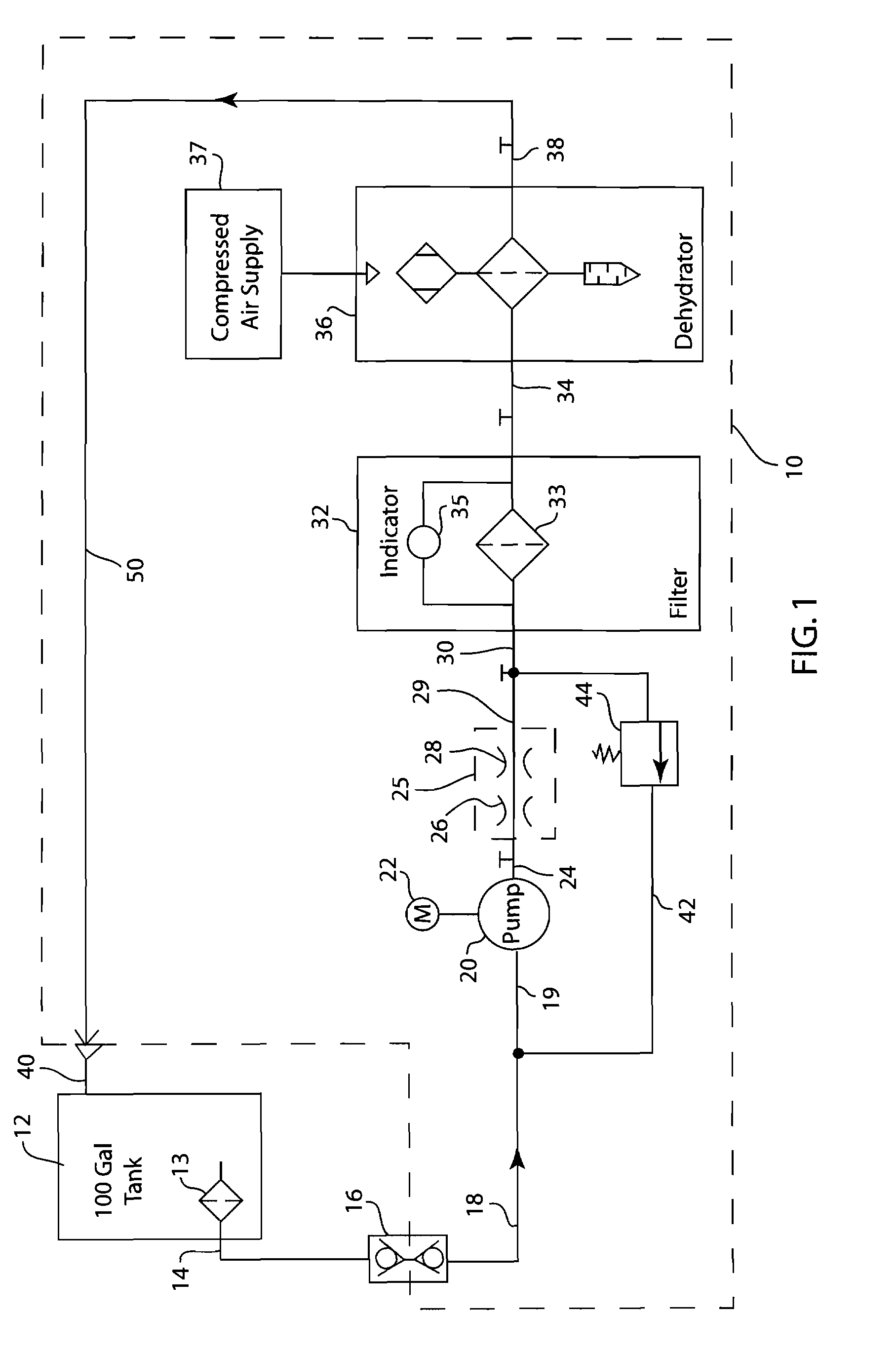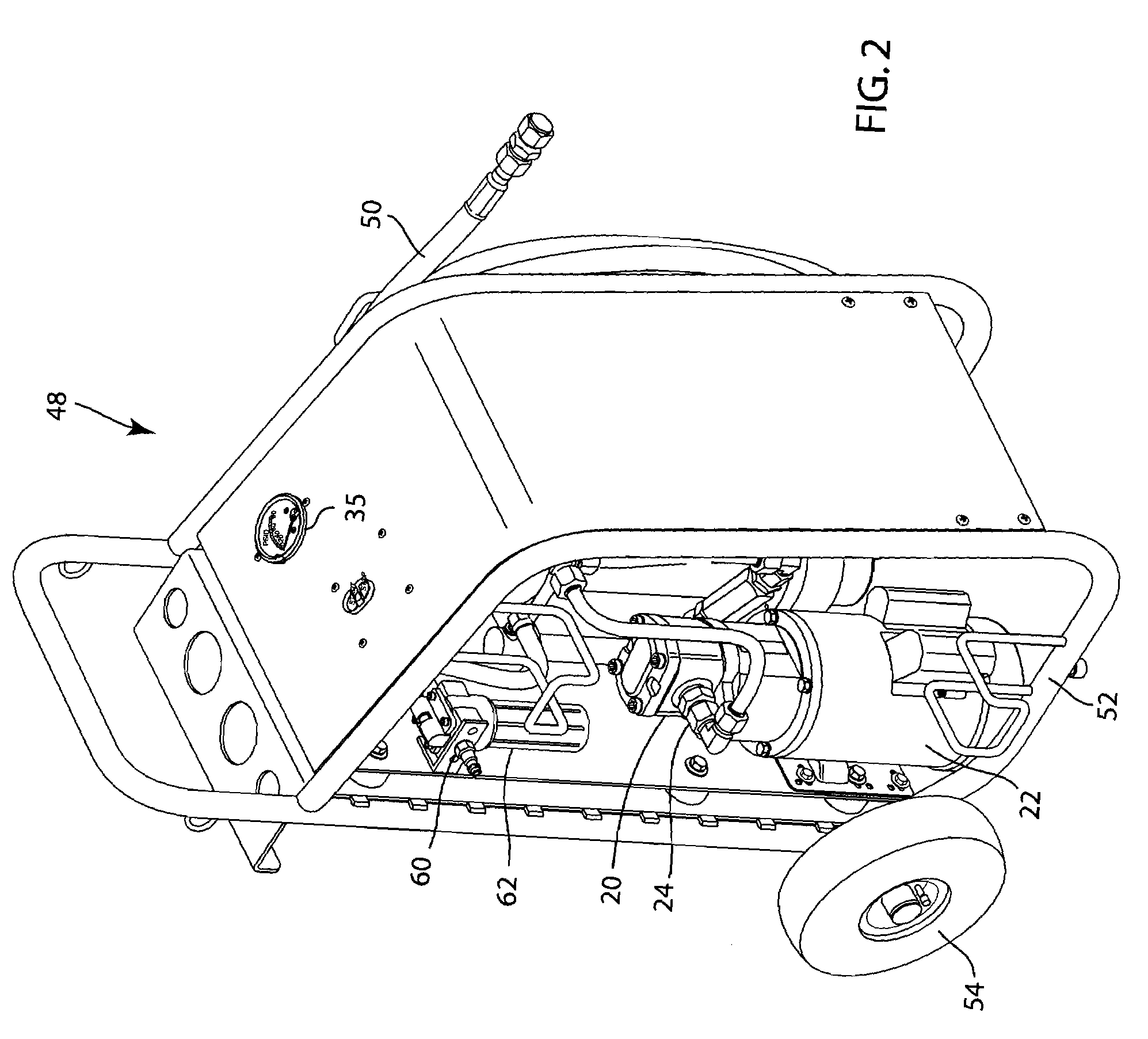Hydraulic fluid dehydration system and method including pre-heating
a technology of hydraulic fluid and dehydrator, which is applied in the direction of membrane heating/cooling, separation processes, and pipes, etc., can solve the problems of reducing the life of bearings, so as to reduce the amount of feedback flow and increase the flow rate of hydraulic fluid through the dehydrator
- Summary
- Abstract
- Description
- Claims
- Application Information
AI Technical Summary
Benefits of technology
Problems solved by technology
Method used
Image
Examples
Embodiment Construction
[0020]FIG. 1 is a schematic illustration of a system 10 that is operable to remove water from a supply of hydraulic fluid, such as oil. Throughout the following description, the term “hydraulic fluid” should be interpreted to include various fluids, such as oil. As shown in FIG. 1, the supply of hydraulic fluid is contained within a storage tank 12. In the embodiment illustrated, the storage tank 12 is a 100 gallon tank, although other size tanks are contemplated as being within the scope of the present invention. The storage tank 12 may be located on a large vehicle, such as a concrete pumping vehicle, that operates various components using pressurized hydraulic fluid. Alternatively, the storage tank 12 could be located at any location that hydraulic fluid or a similar fluid is required.
[0021]The storage tank 12 includes an internal filter 13 connected to an outlet 14 that is in fluid communication with the dehydration system 10 through a connector 16. The connector 16 is a standar...
PUM
| Property | Measurement | Unit |
|---|---|---|
| Pressure | aaaaa | aaaaa |
| Flow rate | aaaaa | aaaaa |
| Diameter | aaaaa | aaaaa |
Abstract
Description
Claims
Application Information
 Login to View More
Login to View More - R&D
- Intellectual Property
- Life Sciences
- Materials
- Tech Scout
- Unparalleled Data Quality
- Higher Quality Content
- 60% Fewer Hallucinations
Browse by: Latest US Patents, China's latest patents, Technical Efficacy Thesaurus, Application Domain, Technology Topic, Popular Technical Reports.
© 2025 PatSnap. All rights reserved.Legal|Privacy policy|Modern Slavery Act Transparency Statement|Sitemap|About US| Contact US: help@patsnap.com



